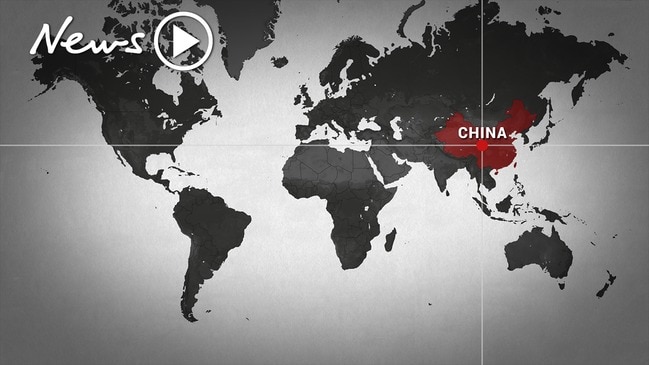Coronavirus: Nations untouched by COVID-19 are predominantly developing countries
The coronavirus pandemic has swept the globe. But not all nations have been hit equally and some places remain barely touched.

Looking for a safe place to sit out the COVID-19 pandemic?
How does a palm fringed lagoon in Fiji or New Caledonia sound or perhaps a dive resort in Papua New Guinea, a beachfront hotel in East Timor? The more adventurous might like to try Latvia, Slovakia, Vietnam or Kuwait.
If there weren’t travel bans, of course.
As the number of deaths increases in Australia and across the first world from the rapidly spreading coronavirus, these exotic locations and many more in the developing world, have reported few cases and zero fatalities so far.
RELATED: Follow the latest coronavirus updates
RELATED: What is social distancing?
RELATED: The only valid excuses for going outside
In fact, some 76 countries have recorded no deaths and while some of the reporting might be dodgy, the most interesting example is the continent of Africa.
From Libya in the north down to South Africa many poorer countries, some of which have been associated with plague and famine, are so far being spared from the global pandemic. Somalia, Zambia, Rwanda, Uganda, Congo, Ethiopia have not reported a single fatality from the latest coronavirus to terrorise the human race.

This could be due largely to the lack of travellers arriving in Africa from the pandemic hot zones of China and Europe.
However, given the massive amount of Chinese investment in Africa ($300 billion between 2005 and 2018 with another $60 billion in the pipeline) and the large numbers of Chinese workers employed on investment projects especially in Nigeria and Angola – which have recorded just one and two COVID-19 deaths respectively – the big question is will Africa be spared from the virus?
News agency Reuters has produced a daily global update of the spread of the pandemic.
As of midday (Sydney time) on March 31 the total number of confirmed cases worldwide stood at 738,546 and the number of recorded deaths at 35,006.
Ninety per cent of all cases are now outside China and almost 100 per cent in the past week are non-Chinese.
The 76 countries and territories listed by Reuters with no deaths include New Caledonia, Cambodia, Laos, Myanmar, Belarus, Georgia, Kyrgyzstan and Mozambique.
Based on the early rates of infection and the predictions of some experts the global death toll from COVID-19 could surpass 500,000 with an unimaginable 200,000 possible in the US alone.


Australia’s death to infection ratio was 0.44 per cent, that’s well behind New Zealand at 0.18 per cent and Singapore on 0.35 per cent, but ahead of Europe’s best performer Germany on 0.8 per cent.
The rest of Europe, where countries reacted much more slowly than Germany, is a pandemic disaster area with Italy recording 11 per cent of deaths to infections, Spain 8.5, the Netherlands 7.1, France 6.4, the UK 6.2 and Sweden 3.0.
Iran is running at 6.8 per cent which is on a par with Egypt but well ahead of other Middle Eastern nations such as Saudi Arabia with a fatality rate of just 0.55 per cent and Qatar 0.15.
In our region China appears to be stable at 4.05 per cent, Japan 2.5, South Korea 1.64, Taiwan 1.0 and Hong Kong 0.6 per cent.
Apart from the US where cases are expected to explode in coming days, the biggest concerns are poorer nations such as Indonesia with 122 deaths from 1414 cases reported to date (8.6 per cent), the Philippines with 78 deaths and 1548 cases (5.03 per cent) and India with 29 deaths from 1070 reported cases (2.7 per cent) in a country of 1.38 billion people.
The spread in these countries is likely to accelerate in the days ahead.
Ebola is a word that strikes fear into the hearts of many people – thanks in no small part to Hollywood movies such as Outbreak and Contagion and yet the latest iteration of the African Ebola virus has killed just 30,000 people since 2014.
The death toll so far from the novel coronavirus stands at 35,000 in a mere four months.
Yet, this pandemic has a long way to go to get even close to the number of lives claimed by the HIV/AIDS tragedy that killed an estimated 36 million people between 2005 and 2012.
The so-called ‘Hong Kong flu’ of 1968 killed one million people and had spread from Hong Kong to Singapore in 17 days and across the seas to Australia within three months.
The exponential rise of rapid people movement has seen COVID-19 spread around the entire planet in just 16 weeks.
The Asian flu, which also originated in China, killed an estimated two million people between 1956 and 1958 including some 70,000 in the United States.
The granddaddy of all recent pandemics was the so-called ‘Spanish flu’ influenza virus between 1918 and 1920 that claimed up to an estimated 50 million lives around the world with an incredible 25 million deaths in the first 25 weeks.
But the gold medal in terms of death rates goes to the bubonic plague or ‘Black Death’ that accounted for between 75 million and 200 million victims between 1346 and 1353.
The plague is also thought to have started in Asia and was carried between continents in fleas that infested the rats living on trading vessels and along the Silk Road. The disease wiped out half the population of crowded cities including Paris and Florence and a quarter of London’s in just 18 months.

In 2020, the first case of the novel coronavirus arrived in Australia inside a traveller from China who arrived on an American made Chinese passenger jet.
Even in the few years since the HIV/AIDS pandemic the world has changed dramatically and the COVID-19 virus will show how many of those changes have been for the better.
Early indications are that many of the first world citizens who populate beaches, cruise ships and aircraft have not taken the lessons of earlier contagions on board, but one message is crystal clear.
Travel is the freeway along which a pandemic spreads, so visiting any of the locations being spared the pain of COVID-19 at this time, however desirable, would be highly irresponsible.
Ian McPhedran is a Sydney-based journalist, author and proud baby boomer.



